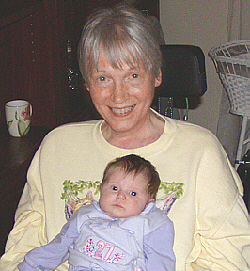How do I know if I would benefit from BiPAP/AVAP?
Like everything else with ALS, the onset of breathing problems can vary from patient to patient. Commonly the person with ALS finds he gets a little short of breath when lying on his back. About the same time, it is likely he will notice that he becomes short of breath easily— with exertion especially, but also after eating, when overly tired, or just in a stuffy room.
This gradually worsens and lying flat, whether on his back or side, becomes a problem. It becomes necessary to use several pillows or even begin sleeping sitting up or in a reclining chair. The human body was designed to breathe best when upright. Lying down makes it harder for the rib cage to move. Unfortunately, the human body was also designed to sleep lying down. Sleeping sitting up is not comfortable for anyone and it is really unhealthy for someone with ALS. If you sleep in a sitting position and then spend your entire day sitting, you will develop bed sores, more appropriately called pressure sores, on your tail bone and other bony points on your backside. This is not a possibility, it is an inevitable result if you spend 24 hours a day on your butt! People with strokes or spinal cord injuries may be unaware that they are developing a pressure sore. You won't be because you haven't lost feeling, and pressure sores HURT! Also, constant sitting, even with your feet elevated, will not allow good circulation to your legs and swelling will be another problem. (Click here to see info on "Swelling of Feet and Legs")
Using a BiPAP/AVAP will allow you the wonderful and necessary pleasure of lying down, stretching out, turning on your side, and sleeping soundly.
A less obvious sign of hypopnea (shallow breathing) may be noticed before actually feeling short of breath. Even in healthy people, breathing is shallower when we sleep. For people with ALS, that little extra drop in volume can mean trouble since they are breathing shallowly to start with. When hypopnea occurs, you notice that you are more and more often waking up in the morning with a headache that goes away when you get up. The reason for this is that shallow breathing begins to affect the ability to "blow off" carbon dioxide. The excess CO2 causes blood vessels in the brain to dilate which in turn leads to a headache. The headache goes away when you wake up and start moving around because you breathe more deeply when awake and blow off the CO2.
We often associate that type of headache with "sleeping wrong" and tight muscles in the neck. Getting up also eases that muscle strain so differentiating between the two types of headaches is blurred. Try this: the next time you awaken with a headache, stay put. Don't change position, just begin taking deeper breaths. If the headache eases it is due to hypopnea and BiPAP/AVAP will help. Untreated, the hypopnea will get worse and you will begin to wake up more and more tired and groggy. You may begin to feel confused and disoriented in the morning and tired all day.
Although hypopnea is the more common problem with neuromuscular diseases, apnea can also occur. It can be really obvious that something is wrong. You find yourself drifting off to an exhausted sleep only to be jolted awake by a wave of feeling that includes a galloping, thudding heartbeat, weakness, dizziness, and a generally panicked feeling. This happens over and over until you finally are so exhausted you sleep through it. It can also be much more subtle. You wake up frequently and may or may not remember doing so. Either way, in the morning you know you just didn't get enough sleep. You are tired all day, doze off frequently, have headaches, feel half sick from exhaustion, have a poor appetite, lose weight dramatically, can't think or remember as well as you did, are emotionally on thin ice, and feel an undercurrent of constant anxiety. In short, you have all the problems associated with sleep deprivation even though you may seem to spend hours in bed and hours dozing in your chair.
An overlooked part of respiratory problems is the tremendous number of calories burned by the increased effort of breathing. Swallowing problems may not be present yet but the weight loss is fast and out of proportion to how much you eat. After a lifetime of battling the bulge, this is me before and after beginning BiPAP/AVAP.


